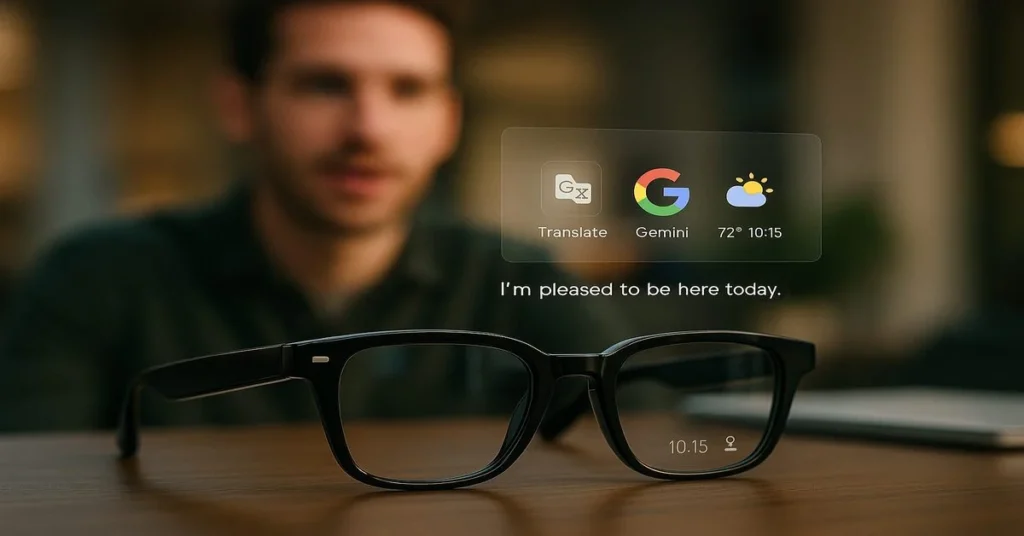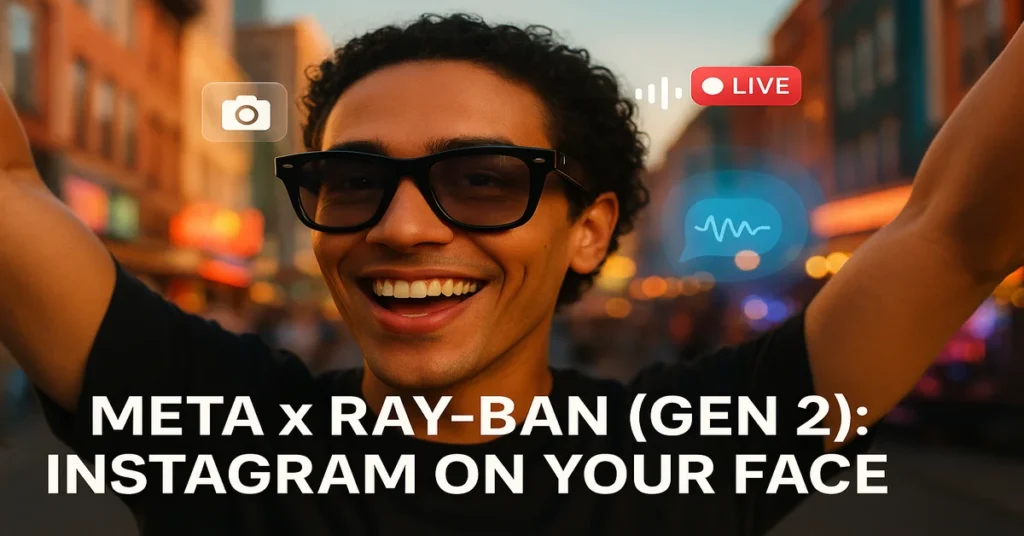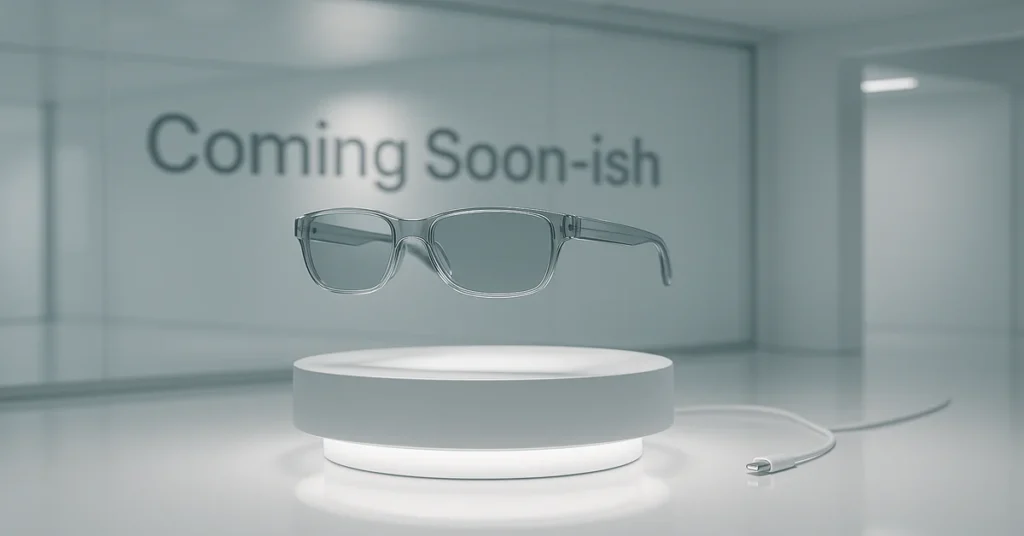Remember When Glasses Were Just… Glasses?
Back in the day, glasses were either a fashion statement or a reluctant prescription necessity. Fast-forward to 2025 and you’ve got Smart Glasses that do everything short of filing your taxes. From augmented reality (AR) overlays to real-time AI translations and live streaming, these things are your new best friend—assuming you’re cool with your best friend knowing your GPS location at all times.
But hey, privacy is so 2020.
Let’s get into the best smart glasses of 2025, what’s new, what’s overhyped, and whether it’s finally time to ditch your boring old specs for something a little more Jetsons.
What Exactly Are Smart Glasses (and Why Should You Care)?
Smart glasses are wearable eyewear devices that combine traditional vision correction or sunglasses with embedded tech like cameras, microphones, speakers, and augmented reality (AR) overlays. They basically put a miniature smartphone and AI assistant right in front of your eyeballs.
The perks? You can:
- Translate signs in real time while traveling (finally know what “Sortie” means).
- Record your POV while ziplining across Costa Rica.
- Ask your glasses the weather forecast while ignoring actual clouds overhead.
They’re a lifestyle upgrade… with a data-collecting twist.

👓 Google’s Android XR Glasses – The Underdog That Bit Back
After the PR flop of Google Glass circa 2013 (RIP, you creepy little thing), Google has returned with vengeance—and a rebrand.
At their 2025 I/O event, Google debuted the Android XR smart glasses, developed alongside Samsung, Warby Parker, and Gentle Monster. These look like regular glasses, but they hide:
- Real-time AR translations (you can literally read someone’s mind. Well, subtitles).
- Context-aware information overlays using Google Gemini AI.
- A clean, non-invasive design that won’t make you look like a walking Black Mirror episode.

Meta x Ray-Ban (Gen 2): Instagram on Your Face
Meta doubled down on their partnership with Ray-Ban to launch their 2nd generation smart glasses—and these ones are actually pretty cool. Think:
- 12 MP front-facing camera (for POV selfies and concerts).
- 5 microphones (yes, five).
- Open-ear audio and built-in Meta AI to tell you… whatever you ask it.
You can livestream directly to Instagram and get AI-powered answers without even pulling out your phone. Honestly, your phone might start getting jealous.

Apple’s Secret Weapon (Coming Soon-ish)
Apple hasn’t dropped its smart glasses yet, but according to The Verge, they’re rumored to be launching in 2026.
Knowing Apple, they’ll:
- Be sleek and overpriced (as expected).
- Have seamless Siri integration.
- Possibly force you to buy a new charger every 6 months.
But when they launch, expect them to disrupt the entire wearable market like the AirPods did to headphone jacks.
| Smart Glasses | Key Feature | Ideal For |
|---|---|---|
| Xreal One | 120-inch virtual screen | Streamers, travelers |
| Viture Pro XR | 130-inch floating display | Gamers |
| Amazon Echo Frames (Gen 3) | Alexa integration | Smart home lovers |
| Brilliant Labs Frame | Open-source AI | Developers and tinkerers |
Each pair has its own vibe. Choose wisely, depending on whether you want to conquer the metaverse or just impress your brunch squad.
Real-Life Use Cases: Not Just for Tech Bros
Still wondering who even needs these?
Here are some real-world scenarios where smart glasses are actually useful:
-
Travelers: Instantly translate street signs or menus without butchering the language.
-
Cyclists/Runners: Get speed, distance, and map overlays while keeping your eyes on the road.
-
Parents: Record adorable chaos without holding your phone.
-
Content Creators: Livestream your life without carrying a gimbal.
-
Homeowners: Control smart devices with a glance and a voice command. “Turn off the lights” just became a blink away.
Honestly, if you’re someone who multitasks like your life depends on it, these are game-changers.
Let’s Talk Downsides (Because Nothing Is Perfect)
While Smart Glasses 2025 are pretty amazing, they’re not without some fine print:
- Battery life still lags. You’ll be charging these like your phone… every night.
- Privacy concerns are real. Recording video without consent? Yeah, that’s a lawsuit waiting to happen.
- Price points vary wildly—from $270 to over $1,000. And no, insurance probably won’t cover them.
- Social etiquette is still catching up. People aren’t exactly thrilled when your glasses have a red recording light blinking mid-convo.
But if you’re tech-savvy and okay with being an early adopter, the pros outweigh the quirks.
Before You Buy: What to Look For
Choosing smart glasses isn’t like grabbing a pair off the drugstore rack. Keep these in mind:
✅ Camera resolution – 12MP is becoming the new standard.
✅ Audio quality – Open-ear vs bone conduction varies by use.
✅ AR overlays – Not all glasses offer them.
✅ App compatibility – Make sure your phone plays nice.
✅ Style – If you wouldn’t wear them out in public… why bother?
And don’t forget to check out reviews on platforms like TechRadar or The Verge for the latest updates.

Conclusion: Smart Glasses Are Here to Stay (and They’re Only Getting Smarter)
The smart glasses of 2025 aren’t just gadgets—they’re digital lifestyle upgrades. As they become more stylish, less bulky, and more integrated with AI, we’re likely looking at the beginning of the end of traditional screens.
Who needs to hold a phone when your glasses can show you directions, film your TikTok, and give you weather alerts all at once?
Whether you’re a content creator, a tech enthusiast, or someone who’s just tired of juggling five devices at once—Smart Glasses 2025 may be worth looking into. Literally.
Curious about the tech powering the future of smart glasses? AI isn’t just living in your eyewear—it’s running the show behind the scenes. Here’s how NVIDIA is building a $500B AI infrastructure that could fuel the next generation of wearable technology.
